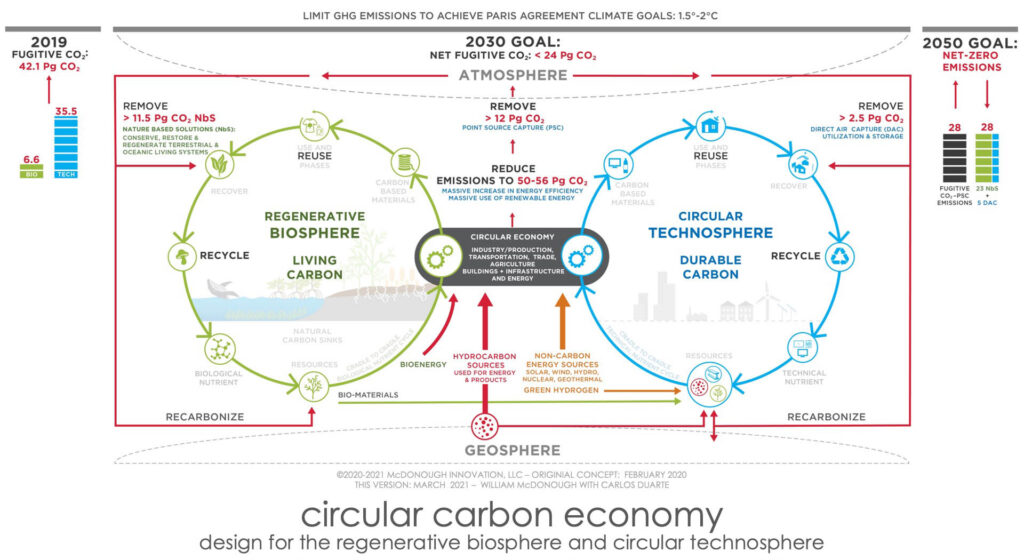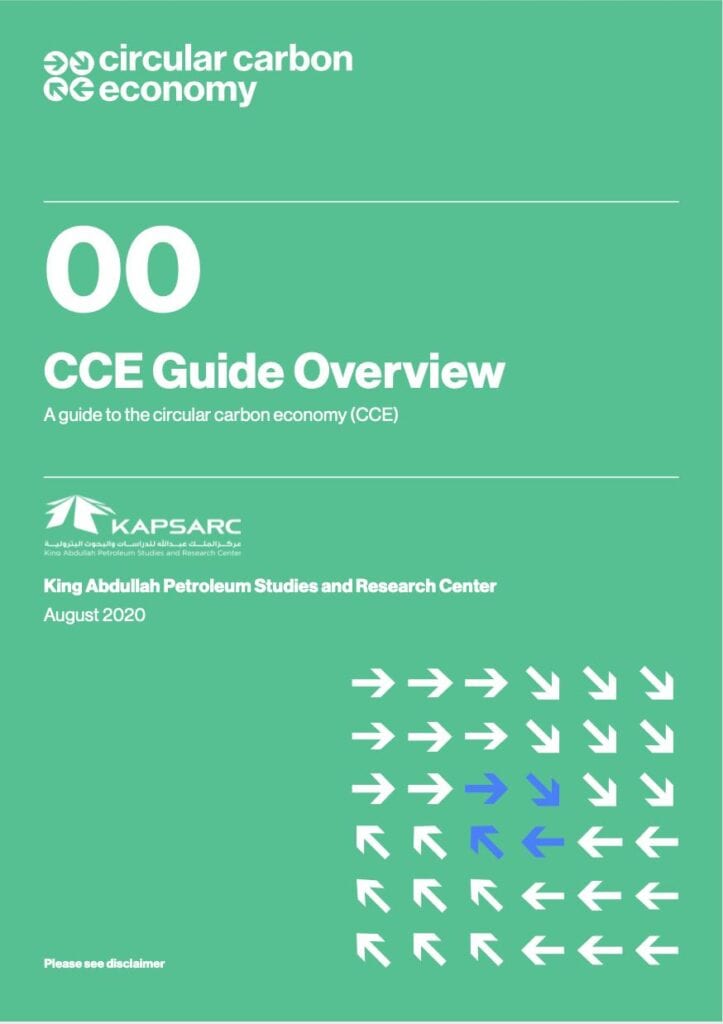The Circular Carbon Economy concept serves as a framework for effective carbon management for both carbon-based materials and carbon-based sources of energy.
The Circular Carbon Economy recognizes carbon’s multiple forms and benefits while defining positive ways for carbon to be used safely, productively and profitably. Guided by Cradle to Cradle Design’s biological and technical nutrient cycles, the Circular Carbon Economy is designed to directly address the climate crisis. With these two distinct carbon cycles, the intention is to reduce, reuse, recycle and recover carbon-based materials and hydrocarbon energy sources in ways which eliminate waste, support regenerative growth and restore the Earth’s natural abundance and diversity. In this framework, biological nutrients are safely cycled to accrue living carbon into the Regenerative Biosphere while technical nutrients are safely used, reused, recycled and returned to the Circular Technosphere across generations of economic growth and prosperity.
“Building upon Cradle to Cradle and the New Language of Carbon, we can build a framework for carbon materials management that embraces the good intentions of the Three Rs (recycle, reduce and reuse) while seeking to improve upon their performance, adding to the traditional hierarchy new principles to eliminate the concept of waste, enable effective material flows and create a truly sustainable carbon economy that is both safe and circular. To the Three Rs, we add a fourth – Remove. Let us seek to identify, encourage and implement strategies to remove fugitive carbon from our oceans, lands and atmosphere.”
William McDonough


The G20 Presidency invited William McDonough to open the March G20 Climate Stewardship Working Group and Energy Sustainability Working Group meetings by presenting the Circular Carbon Economy concept. McDonough collaborated with marine biologist, Carlos Duarte, on this concept which integrates innovative business models of the larger circular economy where carbon is both a valuable material and a valuable energy source.
McDonough also provided guidance and contributed to KAPSARC’s CCE Guide Overview, published in August 2020. This report introduces the concept of the Circular Carbon Economy and serves as an overview of the CCE Guide (www.cceguide.org). The guide consists of eight reports at the time of its launch and additional reports may be added to it over time.
In November 2020, world leaders encouraged the use of the Circular Carbon Economy framework.
